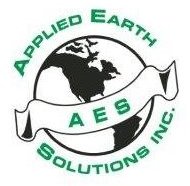Phase 1
Before the 1950’s, most homes utilized coal as a source of fuel for heating. After the 1950’s, global and domestic petroleum production advanced and most homes in the northeastern United States were primarily heated with fuel oil #2. After the 1960’s, pipelines carrying natural gas around the United States were developed. During the 1960’s & 1970’s, the decision to convert from oil heat to natural gas to heat homes was quite common. In many cases, these underground storage tanks (USTs) that stored the heating oil for these homes were left in place with often little or no abandonment documentation or validation of the USTs integrity. The responsibility and liability associated with these USTs, or worse, leaking USTs, at residential and commercial sites is important consideration for owners in terms of maintaining property value.
AES’s offers tank sweep services and tank investigation services to help clients eliminate, reduce, and control the liabilities associated with USTs on their property. A physical inspection of the dwelling or structure for UST fill ports, vent lines, feeder lines usually offer the first clues that a UST may be present at a site. Physical inspections also include searching for UST location with a tile probe along with identifiable features that may disguise or hide the presence or former presence of a UST. A magnetometer (metal detector) is also utilized during tank sweeps to identify the actual location of USTs or UST parts. A magnetometer can be set to search conductively or inductively depending upon what UST features have been identified at a site.
After AES’s tank sweep has been conducted, and a UST or features of a UST existing at the site has been identified, the client will be presented with professional, cost effective options to mitigate the liability. Removal of the UST is usually the best option, but when removing the UST altogether is not feasible, sampling around the UST, or former UST location, to determine if the UST has leaked or is leaking may be the client’s only option. Further subsurface evaluations and site/ off site investigations may be needed in extreme case when a UST has leaked and contaminated the surrounding areas. AES’s experienced staff of professional geologists, subsurface evaluators, NJDEP UST Closure license holders, and LSRP’s, will guide you into compliance and offer sound advice toward the remedial actions in order to reduce and control the responsible party’s liability.

